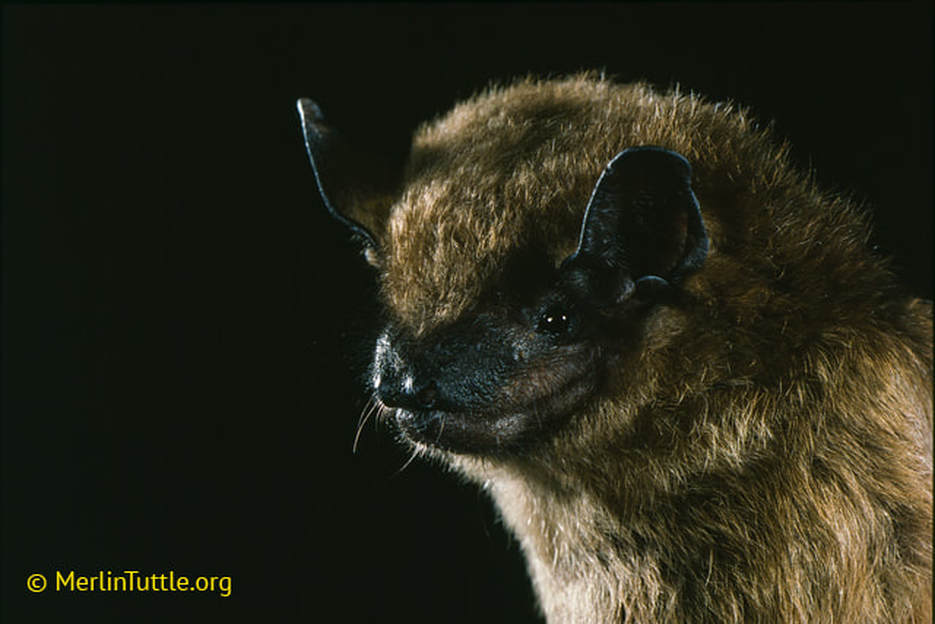Big brown bat (Eptesicus fuscus)
Description: The big brown bat is a fairly large bat, as its name implies.
Fur color ranges from dark brown to reddish or golden brown. They are similar in appearance to the evening bat, but are larger in size.
Roosting behavior: Found more commonly in manmade structures such as buildings and bridges, this species historically would roost in small colonies in tree cavities. Sometimes are found roosting with Brazilian free-tailed bats.
Diet: Big brown bats have strong jaws and heavy teeth, allowing them to feed on hard-bodied insects such as beetles. They have also been known to eat flies, mosquitoes, and termites and ants during their flying stages.
Morphological characteristics: Keeled calcar, rounded tragus
Range: Big brown bats are not as common in Florida as in other parts of their range, however, in Florida, they occupy the panhandle and the upper two-thirds of the state, as well as several counties in southwest Florida.
Remarks: Big brown bats typically give birth from May through mid-June, to twins in the eastern U.S. and a single pup in western states.
At a glance:
Measurements |
Categories |
Wingspan: 320-350 mm (13 inches) |
Family: Vespertilionidae |
Body length: 53-81 mm (2 and 1/2 inches) |
Florida occurrence: Resident |
Total length: 87-138 mm (4 and 1/2 inches) |
Florida status: Uncommon |
Forearm length: 41-52 mm |
Roosting behavior: Colonial |
Weight: 11-23 grams |
Regional classification: Temperate |
Bats of Florida by
Cynthia S. Marks and George E. Marks; Sep 26, 2006
Cynthia S. Marks and George E. Marks; Sep 26, 2006

